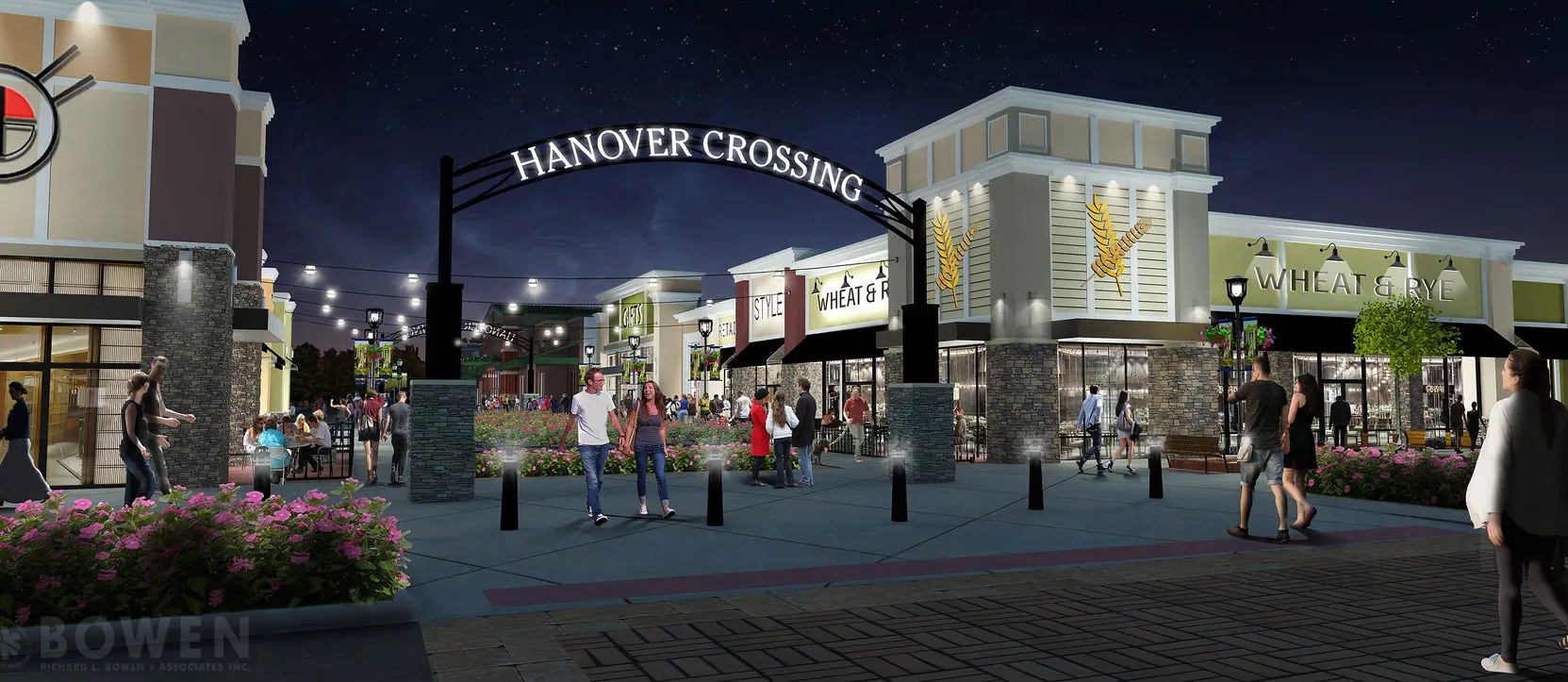Retail, meet residential. Residential, retail.
Mixed-use projects are all the rage right now as developers reimagine antiquated retail outlets into vibrant, amenities-rich lifestyle centers supplemented by apartments. This is a win-win for developers and local residents alike because the redevelopment of failing malls into “live, work, play” environments makes sense from a business and community point of view, and the accompanying housing units fit into the master plans of most communities that desperately need housing stock other than single-family homes. Also, the housing supplies a built-in customer base to businesses who want that reassurance before committing to long-term leases.
The Hanover Mall is a perfect example of mixed-use done right.
A traditional indoor mall built in the early 1970s, Hanover Mall was less than 50 percent occupied and considered a “failing mall” when Cincinnati-based PREP bought it in 2016. But PREP saw more than failing brick and mortar, and soon proposed a $225 million redevelopment that aimed to turn Hanover Mall into Hanover Crossing – an open-air lifestyle center buoyed by 297 apartment units.
Residents often love the retail aspect, but they balk at the housing component because they’re worried about traffic, water, putting more students in the school system, and burdening public safety services. That’s what happened in Hanover and even though the good news is the local Planning Board approved Hanover Crossing’s special permit on December 16, it took roughly 18 months of messaging, community outreach, and media relations work to make that happen.
That’s where the Belfort Group enters the equation. Here are five quick tips for how we help projects like Hanover Crossing get approved.
5. Get Boots on the Ground and Talk to People
It might sound old fashioned in the digital age but getting out into the community and meeting with people is of the utmost importance. Until residents have a face to put with the project, they usually assume developers are nameless, faceless, corporate villains with nefarious intent. One-on-one contact that opens up lines of communications is invaluable for effective community engagement.
4. Get Social
Now that you’ve got your ground game going, get on social media and start monitoring the chatter. Most towns (and even neighborhoods) have Facebook pages where thousands of people virtually gather to discuss local issues, which is why BG gains access to the groups and monitors the discussion to identify supporters and use the reconnaissance to effectively message opposing sentiment.
Create Effective Messaging
Having all your ducks in a row and as much information as possible on hand is crucial when establishing rapport with the community and elected officials. At BG we recommend setting up a small website (like this one in Hanover) devoted to housing a host of information about the project including specs, the leadership team, renderings, and information pertinent to residents. Creating FAQs (Frequently Asked Questions) to hand out to residents at meetings is also a necessity, as is extolling the virtues of mixed-use projects in general to allow traditional retail to survive.
2. Create a Project Advisory Council
People love to feel valued and heard, so do both by creating a PAC (Project Advisory Council) and invite local supporters to join. This allows for increased levels of communication and outreach, but more importantly these supporters essentially become project ambassadors. BG arms them with our messaging and our talking points get filtered through these residents who speak to other stakeholders both in-person and online. The positive impact is much greater when residents are supporting the project with positive recommendations as opposed to the development team issuing the same remarks.
1. Media Relations & Thought Leadership
All the great things you’re doing don’t really count much if you can’t get the word out that they’re happening. Once you’ve got some positive momentum then begin proactive media relations and feature milestones, successful community meetings, and forward progress in the local, regional, and (depending on the size and scope of your project) national news. Penning thought leadership pieces on the importance of mixed-use projects and submitting to trade publications is also advisable. Secured opportunities in The Boston Globe, the Boston Business Journal, Banker & Tradesman, Bloomberg Radio and local press were crucial in reaching residents and key decision-makers in Hanover and putting the project in a positive light.

